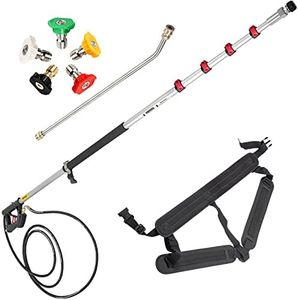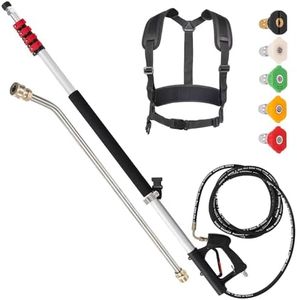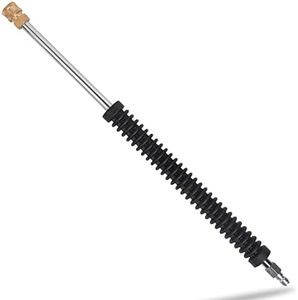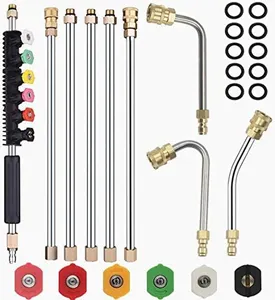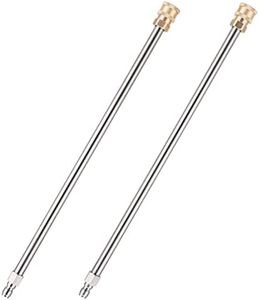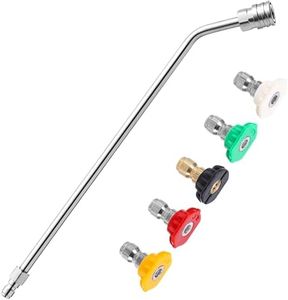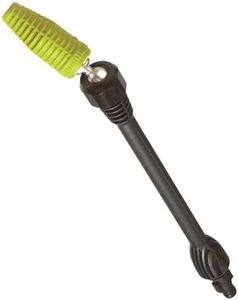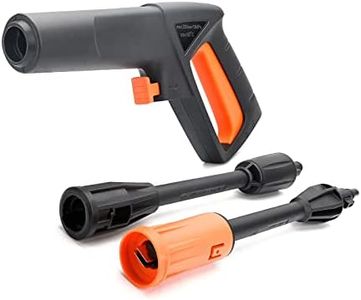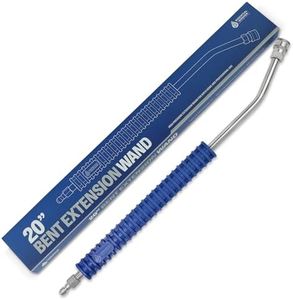We Use CookiesWe use cookies to enhance the security, performance,
functionality and for analytical and promotional activities. By continuing to browse this site you
are agreeing to our privacy policy
10 Best Telescoping Pressure Washer Wand
From leading brands and best sellers available on the web.Buying Guide for the Best Telescoping Pressure Washer Wand
Choosing a telescoping pressure washer wand can make cleaning hard-to-reach places—like high windows, siding, or gutters—much easier and safer. Instead of climbing ladders, you can stay safely on the ground while getting a powerful clean. The key is to focus on certain specifications that relate directly to the cleaning tasks you expect, your physical comfort, and your pressure washer’s compatibility.Length (Extension Range)Length, or how far the wand can extend, is critical because it determines how high or far you can reach without straining. Wands commonly range from about 12 feet to 24 feet when fully extended. Shorter wands (up to around 12 feet) work well for single-story homes or areas not too high, while medium ranges (13-18 feet) tackle higher siding or tall vehicles. The longest wands (over 18 feet) are best if you have a multistory house or large buildings. Consider your cleaning height needs—pick a wand just long enough to reach your highest point without unnecessary weight or awkwardness.
MaterialThis specifies what the wand is made from, such as aluminum, fiberglass, or stainless steel, and it affects both weight and durability. Aluminum is lightweight and resists rust, making it comfortable for longer jobs. Fiberglass is also light and non-conductive, a good pick around electrical sources. Stainless steel is heavier but extremely strong and durable if you need a wand for heavy-duty use. If you’ll be cleaning for long stretches or struggle with weight, a lighter material will cause less fatigue.
Maximum Pressure Rating (PSI)The maximum pressure rating tells you the highest water pressure the wand can safely handle, measured in pounds per square inch (PSI). Light-duty pressure washers run below 2,000 PSI, mid-range up to 3,000 PSI, and heavy-duty even higher. Pair your wand’s pressure rating to your machine’s output—never use a wand with a lower rating than your washer, as you risk damage. Picking the right rating protects both your equipment and yourself.
Connector Type and CompatibilityThis refers to how the wand attaches to your pressure washer hose or gun. Common connectors include threaded, quick-connect, or specific brand couplings. Compatibility is key—a mismatch means it won’t work at all or could leak dangerously. Before buying, check what type your pressure washer uses. If in doubt, choose a wand with multiple adapters for broader fit.
WeightWeight influences how easy the wand is to control, especially when fully extended. Lighter wands are easier to hold for a long time and are less tiring, especially for overhead tasks. Heavy wands can be harder to maneuver and may cause arm or shoulder fatigue. Consider how much time you’ll spend washing high surfaces and choose a weight level you feel comfortable controlling steadily.
Ease of Adjustment and Locking SystemThis determines how simple it is to extend, retract, and lock your wand at a given length. Good systems let you change the length quickly and lock it securely, preventing accidental collapses. Twist locks are common, but some have lever or pin locks for extra security. If you plan to adjust the length frequently or need to guarantee safety, look for a wand with smooth but sturdy locking mechanisms.
Accessory and Nozzle CompatibilityThis tells whether you can attach different nozzles or accessories, such as gutter cleaners or brushes, to the wand tip. Universal tips offer the most flexibility, letting you switch spray patterns for different jobs, while wands limited to proprietary tips might restrict your options. If you want to tackle a variety of cleaning tasks with your setup, check that the wand works with standard quick-connect nozzles.
